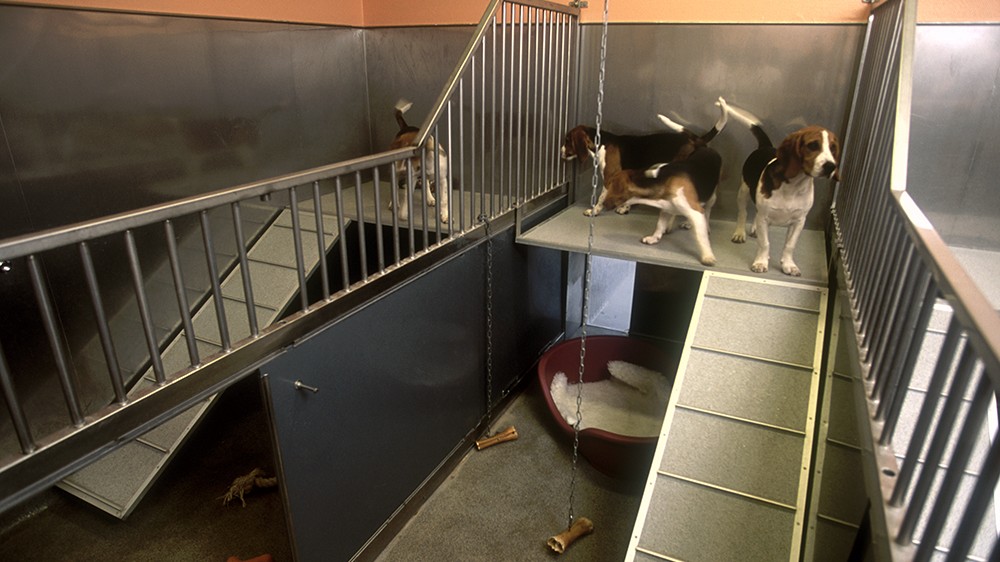Promoting social housing during telemetry studies

A new paper by Dr Helen Prior, NC3Rs, and cardiovascular expert Dr Mark Holbrook, highlights an increase in the adoption of social housing for cardiovascular telemetry studies in dogs, non-human primates and minipigs.
This refinement is becoming the new standard approach across the pharmaceutical industry, assisted by improvements in technologies and the sharing of experience and data between companies, but a concerted cross-industry effort is required for this to be the global norm.
A telemetry study is required for most new medicines as part of the overall safety/toxicology package. These studies assess the potential for adverse effects on blood pressure, heart rate and electrocardiogram (ECG), which are common observations in human trials. In the last decade, developments within telemetry technologies have allowed recordings to be made from animals housed in compatible pairs or groups, a major change from previously when most studies were performed using animals housed in individual pens. Social housing allows more normal behaviours to be expressed by the animals, reflected in lower heart rates and reduced stress from isolation. Not only does this improve the welfare of the animals, but it also improves the quality and reliability of the data obtained.
The NC3Rs has previously worked with the pharmaceutical industry to promote the adoption of this refinement, publishing recommendations in 2016. This new paper addresses concerns around data quality and potential for cross-contamination between animals, sharing information and experience from industry to encourage wider uptake.
Changes to the regulatory guidelines for these studies (ICHS7B draft Q&A) are currently under discussion, placing more emphasis onto data quality and sensitivity – the ability to detect small changes in the cardiovascular parameters of interest. Social housing should be a core component within ‘best-practice’ recommendations under development and the NC3Rs will continue to advocate this as the standard approach for telemetry studies across the global industry.
For more information, including a curated bibliography of relevant papers and posters with validation data in socially-housed non-rodents (dogs, non-human primates and minipigs), visit the NC3Rs project webpage: Refinement of rodent and non-rodent housing during telemetry recordings.
References
-
Prior H, Holbrook M (2021). Strategies to encourage the adoption of social housing during cardiovascular telemetry recordings in non-rodents. Journal of Pharmacological and Toxicological Methods 108: 106959 doi:10.1016/j.vascn.2021.106959
